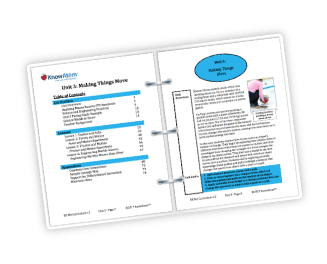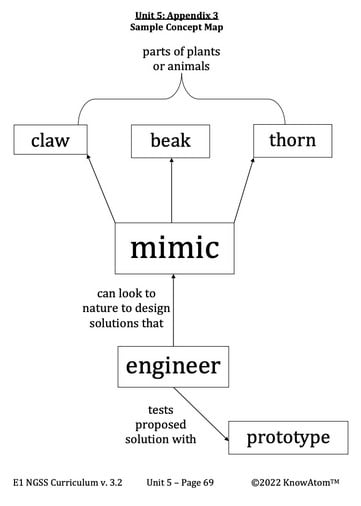In this lesson, students explore how the external structures of plants and animals help them get what they need to survive. They investigate how the shape of a bird beak determines what the bird can pick up and eat.
In the last unit, students explored how animals have body parts that help them survive and grow. In this unit, students apply what they have learned about the structures of plants and animals to mimic those structures to solve problems facing people.
This page showcases the components of the first lesson in this unit, in which students continue to explore the phenomena of how plants and animals have different body parts to help them get what they need to survive and grow. Students analyze different shapes of animal claws, bird beaks, and plant thorns, and then investigate how the shape of a bird’s beak affects the type of food it can collect.
This science background gives teachers deeper background information on the phenomena students investigate in the unit. It helps teachers understand the “why” and “how” of the topics being explored.
Biomimicry begins with the idea that nature has already solved many of the problems facing society today, and we can use these solutions as inspiration for human-designed technologies. Technology is anything that people make to meet their needs and wants. This is where the term biomimicry comes from; bio means life, while to mimic means to copy or imitate.
Engineering is one field that uses biomimicry in some of its solutions. Engineers use scientific knowledge and mathematics to solve a problem by creating new technologies. For example, Japanese engineers were intrigued by the structure of the mosquito’s mouth, which allowed it to pierce another animal’s skin, often without the animal feeling it. They used the structure of the mosquito’s mouth as inspiration for a needle that could be used in medicine and could painlessly penetrate the skin.
In this lesson, students explore how the external structures of plants and animals help them get what they need to survive. They investigate how the shape of a bird beak determines what the bird can pick up and eat.

Prepared hands-on materials, full year grade-specific curriculum, and personalized live professional development designed to support mastery of current state science standards.
Beak: the hard, pointed body part that sticks out of a bird’s face
Claw: a body part at the end of an animal’s toes that is sharp and curved
Engineer: anyone who uses scientific knowledge and mathematics to solve a problem by creating new technologies
Mimic: to copy
Prototype: a smaller version of what will be engineered
Thorn: a hard, sharp part of a plant that sticks out of a plant’s roots, stem, or leaves
Using Claws
Many animals have claws. A claw is a body part that is sharp and curved. Claws are at the end of an animal’s toes.
Birds such as eagles have claws. Tigers have claws. Cats have claws. Bears have claws.
Animals use their claws in different ways. Many lizards have claws. They use their claws to help them climb. Cats also use their claws to climb. They protect themselves with their claws. And they use their claws to hold animals they will eat.
Birds use their claws for many things. They use them to carry sticks to build a nest. They use them to hold onto branches. They also use them to catch and carry animals they will eat.
Bird Beaks
Birds don’t only use their claws to catch food. They also use their beaks.
A beak is the hard, pointed body part that sticks out of a bird’s face. Birds use their beaks to pick up and eat food.
Not all bird beaks are the same. Some are narrow. Others are wide. Some are pointy. Others are curved.



For the hands-on investigation, students compare bird beak types to investigate whether or not the structure of the beak affects the type of food it eats. Students use different objects that represent different beak shapes such as a toothpick, a spoon, or tweezers and try to pick up various materials (e.g. paper for leaves, pompoms for insects, and rubber bands for worms) that represent food items that birds would eat. They collect the data and analyze them to draw an evidence-based conclusion about how beak structure affects what a bird eats.
KnowAtom incorporates formative and summative assessments designed to make students thinking visible for deeper student-centered learning.

Standards citation: NGSS Lead States. 2013. Next Generation Science Standards: For States, By States. Washington, DC: The National Academies Press. Neither WestEd nor the lead states and partners that developed the Next Generation Science Standards were involved in the production of this product, and do not endorse it.
